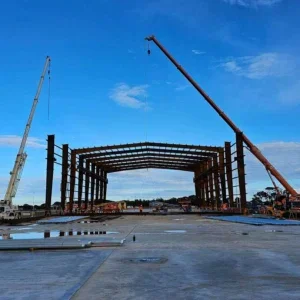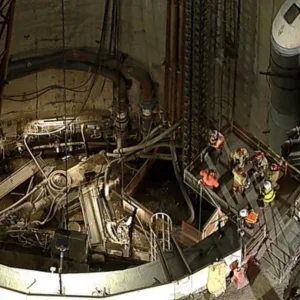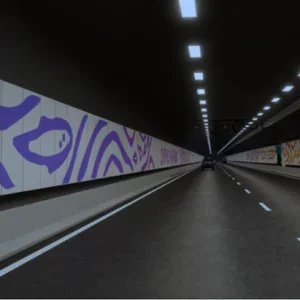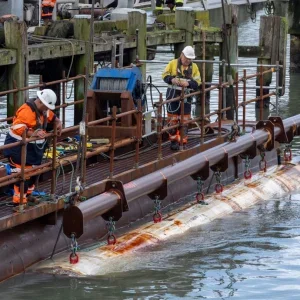A cross-passage being constructed on Shanghai’s Metro Line 4 collapsed last month, causing an eight storey building to collapse, and for others to tilt at alarming angles. No injuries were reported.
The collapse happened at the point where the line runs under the Huangpu river. It was reported that floodwater and building material poured into the construction site.
A flood protection barrier was also destroyed in the collapse, which required efforts of more than 2,000 policemen to build a temporary sandbag wall.
Local newspaper reports described shaking, cracking and collapsing buildings, and engineers are especially concerned, because the tunnel collapse has coincided with the rainy season, and more subsidence is feared.
One remedial measure was to pour cement into the ground near the affected buildings to prevent them from sinking further. Four cement walls, each measuring 5.5m high and 2.2m thick, were built at all the entrances to the tunnel
The cross passage was being constructed with ground freezing methods, and forms part of a new metro line under construction. It will link Shanghai’s older region in the west to the Pudong financial district in the east.
Although investigators are still examining the cause of this collapse, it is a widely known fact that Shanghai suffers from subsidence. The city is built on coastal sand and clay, which has been affected by an influx of people, extensive building and the overuse of underground water. It is estimated that since the 1920s, Shanghai’s 600km2 central area has sunk by between 2m and 3m.







